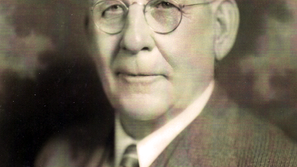Air quality up but still poor for Central Valley areas
- John Rieping
- Apr 27, 2019
- 3 min read
The American Lung Association recently ranked “Fresno-Madera-Hanford” in the top four of the nation’s “most polluted cities.”
This week, the association’s 2019 State of the Air report ranked the area worst in year-round soot, second worst in 24-hour soot, and fourth worst in smog. The report covered data collected in 2015-2017. These, it noted, happened to be “the three hottest years on record” in the U.S. and included seven of the 20 “most destructive wildfires in California history.”
Madera Parks and Community Services had to cancel several events during the period, including a Movies in the Park showing in 2016, due to extreme temperatures and poor air quality.
Compared to the association’s 2018 report, Fresno-Madera-Hanford did have fewer unhealthy days on average, even though hotter days helped increase ozone levels and extended wildfires caused soot levels to spike more often.
The “Fresno-Madera-Hanford” metropolitan area is a new designation for the lung association as it previously did not include us with Kings County, which the association says is “the county with the highest year-round levels of particle pollution in the nation.” Hanford is its county seat. Unbundled from the cities of Fresno and Hanford, Madera County rated better, but still scored badly. The county received a failing “grade” in all three categories, as did most California counties.
As far as smog, Madera County had 101 “orange” days (rated unhealthy for sensitive groups) and eight “red” days (unhealthy for strenuous outdoor activity). By contrast, Fresno County had 194 orange days, 50 red days and two “purple” days (very unhealthy for all).
Ozone levels are improving, according to a 2016 plan for ozone reduction by the San Joaquin Valley Air Pollution Control District. Ozone has been declined steeply from 1990-2015, it stated, with a 73 percent drop in exposure to high ozone levels (75 ppb) since 2002.
In 24-hour soot, Madera County tied with high-ranking Los Angeles County as the 15th worst in the lung association report. Meanwhile, Fresno County ranked fourth worst. In year-round soot, Madera County approached but failed 2012 U.S. Environmental Protection Agency standards with a 12th worst ranking. Fresno County ranked seventh.
The San Joaquin Valley “is at a point of diminishing returns” when it comes to reducing soot from stationary sources, according to the local pollution control district’s 2018 plan. Those emissions have already dropped by 85 percent since 2000. Future improvements may depend especially on reducing emissions from mobile sources, such as automobiles, locomotives, and agricultural, lawn and garden equipment.
The lung association urged the public to fight air pollution by driving less, use less electricity, avoid burning wood or trash, and make sure local school systems require cleaner school buses.
“The Valley’s problematic topography – a bowl surrounded by mountain ranges that trap pollution in — makes it incredibly vulnerable,” noted State Assemblyman Frank Bigelow, Rep.-5th District, Wednesday in response to the report. “However it is threatened further by increased threat of catastrophic wildfires.”
Bigelow has long been a proponent of incentives and funds for removing trees killed or dying due to drought and bark beetle infestation and which are a major fire hazard.
The Madera County Public Health Department could not be reached in time to comment on the recent report.
• • •
Visit https://bit.ly/1SboRgh to review the American Lung Association’s air quality findings. Visit valleyair.org for information on air quality and the local air pollution control district.


























Comments